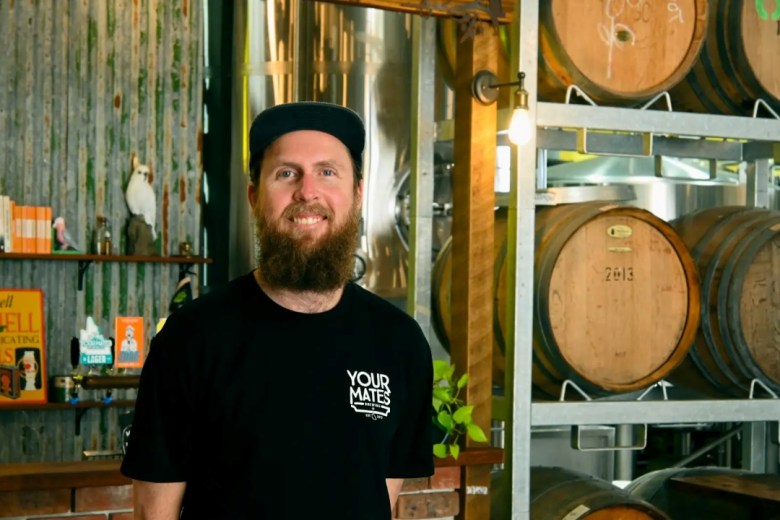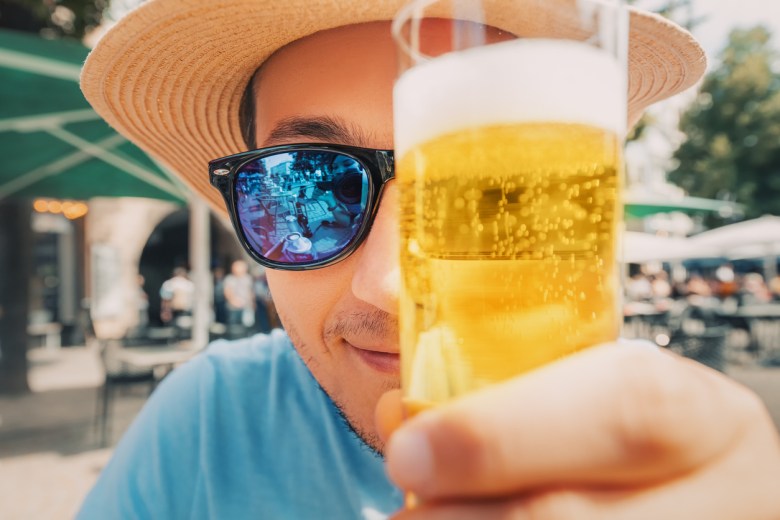Breweries have long been trailblazers. These are taking that tradition and running with it.
The post These Breweries Are Redefining Community, Collaboration, and Fermentation appeared first on CraftBeer.com.
Breweries have long been trailblazers. These are taking that tradition and running with it.
The post These Breweries Are Redefining Community, Collaboration, and Fermentation appeared first on CraftBeer.com.
Breweries have long been trailblazers. These are taking that tradition and running with it.
The post These Breweries Are Redefining Community, Collaboration, and Fermentation appeared first on CraftBeer.com.
Breweries have long been trailblazers. These are taking that tradition and running with it.
The post These Breweries Are Redefining Community, Collaboration, and Fermentation appeared first on CraftBeer.com.
Breweries have long been trailblazers. These are taking that tradition and running with it.
The post These Breweries Are Redefining Community, Collaboration, and Fermentation appeared first on CraftBeer.com.
Breweries have long been trailblazers. These are taking that tradition and running with it.
The post These Breweries Are Redefining Community, Collaboration, and Fermentation appeared first on CraftBeer.com.
Breweries have long been trailblazers. These are taking that tradition and running with it.
The post These Breweries Are Redefining Community, Collaboration, and Fermentation appeared first on CraftBeer.com.
We are joined by not only Andy but The Wort Wrangler this week to chop it up about beer. Items for discussion include: GABF Fallout Events around Denver Round the clock drinking like a pro Changes to festival and awards format BA gatekeeping media passes Johnny Tsunami Forrest and Main hits Philly Creature Comforts Los […]
The post Podcast EP 280 – Wort Wrangler and Andy Spooktacular GABF Fallout Show appeared first on The Full Pint - Craft Beer News.
Across the U.S., breweries are transforming cabins, lodges, and inns into boutique stays that go beyond the pint—immersive getaways where beer, place, and hospitality come together.
The post Beer’s Boutique Lodging Destinations appeared first on CraftBeer.com.
Breweries are turning underused land into camping destinations, drawing RV travelers and boosting business with beer, food, and fresh air.
The post Camping Out Is in at Breweries appeared first on CraftBeer.com.
 The Chief Operating Officer and Founding Brewer of Your Mate’s Brewing shares the personal and business lessons learned along the way.
The Chief Operating Officer and Founding Brewer of Your Mate’s Brewing shares the personal and business lessons learned along the way.  New Feral Head Brewer Charlotte Freeston promises fearless innovation, bold limited releases, and mixed ferment magic.
New Feral Head Brewer Charlotte Freeston promises fearless innovation, bold limited releases, and mixed ferment magic. Breweries across the country are turning up the volume, blending beer and live music to create unforgettable experiences.
The post Pour the Beer, Cue the Band appeared first on CraftBeer.com.
As drinkers diversify and tastes evolve, forward-thinking brewers are doing what they’ve always done best—experimenting, adapting, and creating new ways to connect through craft.
The post Craft Breweries Take a Shot at Whiskey appeared first on CraftBeer.com.
 This Brewer Spotlight highlights Bracket Brewing’s Mike Meletopoulo who speaks to Beer & Brewer about his career built on finding balance.
This Brewer Spotlight highlights Bracket Brewing’s Mike Meletopoulo who speaks to Beer & Brewer about his career built on finding balance. These emerging breweries are redefining what it means to grab a beer in Tampa.
The post The Fresh Faces of Tampa Bay’s Craft Beer Scene appeared first on CraftBeer.com.
 Since 2022, the Cowaramup fuel stop has been operating as a taphouse for craft beers, in an area best known for its wine production.
Since 2022, the Cowaramup fuel stop has been operating as a taphouse for craft beers, in an area best known for its wine production.  Inspired by travels during his twenties, Brett Philips shares how he found his love for beer in Europe and how that inspires his work today.
Inspired by travels during his twenties, Brett Philips shares how he found his love for beer in Europe and how that inspires his work today. Spiced beers aren’t just waiting for an occasion anymore—they’re now year-round, tapping an ever-changing cupboard of craft brewing.
The post It’s Always Spiced Beer Season appeared first on CraftBeer.com.
A brewery can write an airtight recipe, source top-shelf raw materials, and brew a flawless beer, but all those efforts are for naught if a draught system is dirty.
The post Drafting a Solution: Inside the Dirty World of Cleaning Tap Lines appeared first on CraftBeer.com.
 Stavros ‘Stav’ Yiannoukas is National Sales Director at Hawke’s Brewing but his journey to the business was far from traditional.
Stavros ‘Stav’ Yiannoukas is National Sales Director at Hawke’s Brewing but his journey to the business was far from traditional.  With an approachable taste and lower ABV, XXXX Ginger Beer was designed for customers seeking a "near beer" alternative.
With an approachable taste and lower ABV, XXXX Ginger Beer was designed for customers seeking a "near beer" alternative.  With just five years under its belt, Mountain Culture secured a historic three-peat in the GABS Hottest 100 poll.
With just five years under its belt, Mountain Culture secured a historic three-peat in the GABS Hottest 100 poll.  Close to 55,000 consumers voted in the latest GABS Hottest 100 poll, and Mountain Culture’s Status Quo Pale Ale came out on top again.
Close to 55,000 consumers voted in the latest GABS Hottest 100 poll, and Mountain Culture’s Status Quo Pale Ale came out on top again. While women are currently a minority in the homebrewing community, they are increasingly taking on leadership roles and becoming the most outspoken proponents of the hobby.
The post Can Women Save Homebrewing? appeared first on CraftBeer.com.
 Brunswick brewery Keeper Brewing is continuing its focus on crafting one style of beer, the Pilsner, as the category grows in demand.
Brunswick brewery Keeper Brewing is continuing its focus on crafting one style of beer, the Pilsner, as the category grows in demand. Communal singing groups unite people through casual, joyful experiences blending beer and song, fostering connection and rediscovery in community spaces.
The post Singing For Your Beer: Hops & Hymn appeared first on CraftBeer.com.
At Iowa's rapidly expanding Big Grove Brewery, the goal isn’t to make money today, but to make people come back tomorrow.
The post Big Grove’s Big Plans: Give Iowa a Try appeared first on CraftBeer.com.
 One of the classic styles, and one of the most fabulous beers steeped in history, Kölsch is often underrated and overlooked.
One of the classic styles, and one of the most fabulous beers steeped in history, Kölsch is often underrated and overlooked.  John Keske, President of Melbourne Brewers, has been kind enough to share this mouthwatering recipe of his award winning Kölsch.
John Keske, President of Melbourne Brewers, has been kind enough to share this mouthwatering recipe of his award winning Kölsch.